SITH Karnak
The temple of Karnak is the central monument of the Egyptian religious topography, cultivated and expanded by the pharaohs over many centuries, or rather millennia. The temple, with its complex architectural history, is home to treasures of cultic and cultural knowledge. Since 2013, a digital project has been underway to make the temple’s inscriptions digitally accessible. This blog is about that project and the links to ORAEC. Enjoy it!
Nearly 8000 monuments, scenes and inscriptions are published on the website http://sith.huma-num.fr/karnak. There are two direct access points for viewing inscriptions. http://sith.huma-num.fr/karnak/localisation offers a plan of the temple where the inscriptions are listed. There you can go deeper and deeper to the inscription. The second option is chronological access via http://sith.huma-num.fr/chronologie. There you can select a dynasty or a specific ruler. Of course, some rulers left behind a great variety of building activities at Karnak. It is therefore very good that the website allows further filters:

Browsing is very well implemented! Thank you very much! Let’s take a look at the inscription publications using an example: http://sith.huma-num.fr/karnak/6786 is a permanent URL. The number at the end of the address is the KIU number by which the inscriptions can be identified. Here is an impression of the beginning of the page for this inscription:
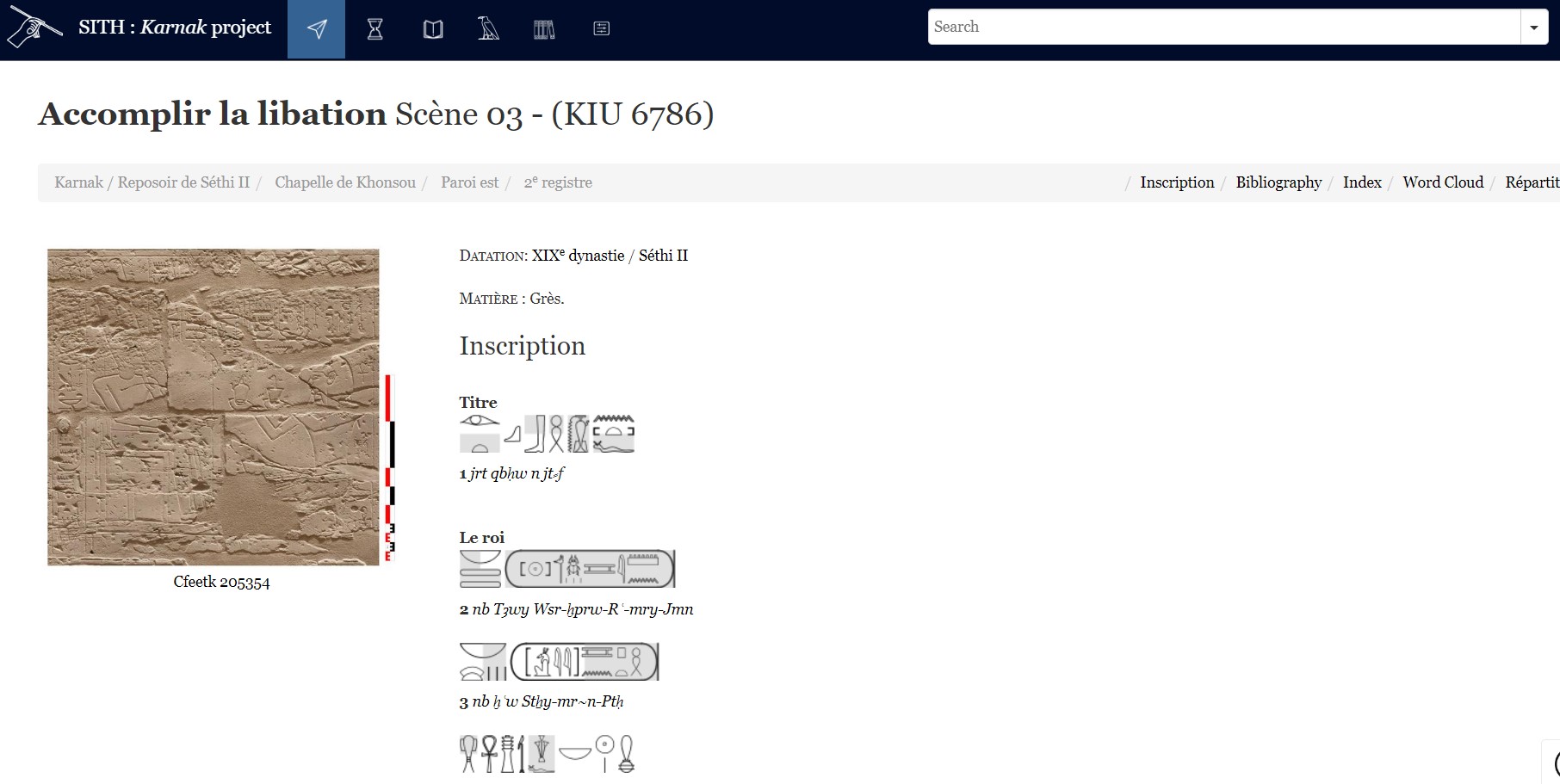
After the heading, there is a path that shows the topographical location within the temple. The individual elements are clickable and lead to the respective overview pages. A photo with the inscription on the left can also be clicked. The photo will open in a larger format in a new tab, where you can download it or request permission to publish it. After brief metadata about the date and material, the inscription is published. The text is divided into lines. Each line has an image with a reproduction of the hieroglyphs and is transliterated. The transliteration has a mouse-over, i.e. there is information about which word it is. The transliteration is also clickable and leads to a detailed view of the word. More on this below. The transliteration proves that this is a French project. It does not use the correct ꜣ, but follows the IFAO tradition.
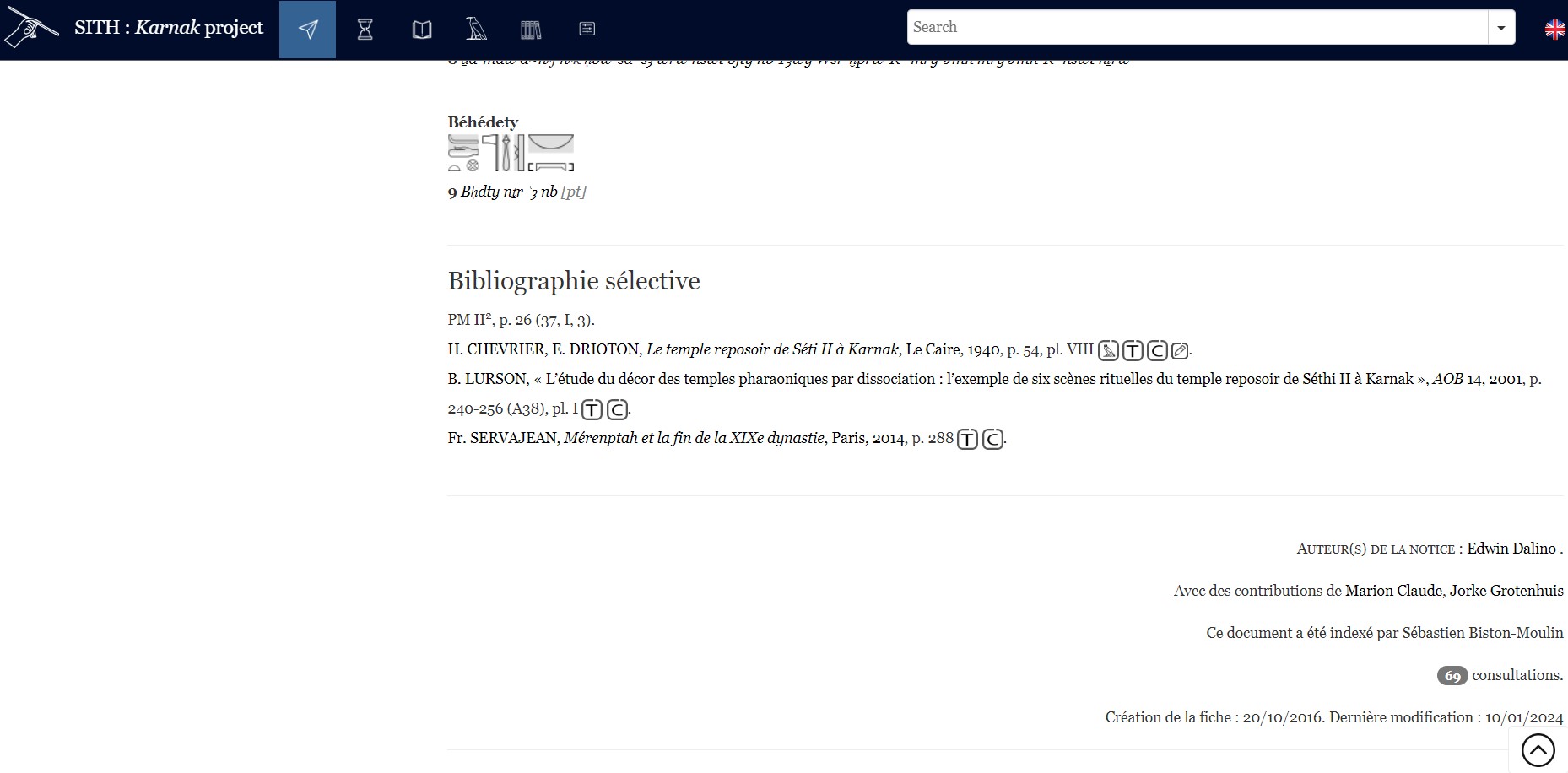
This is followed by a bibliography and author information. But then comes the highlight!
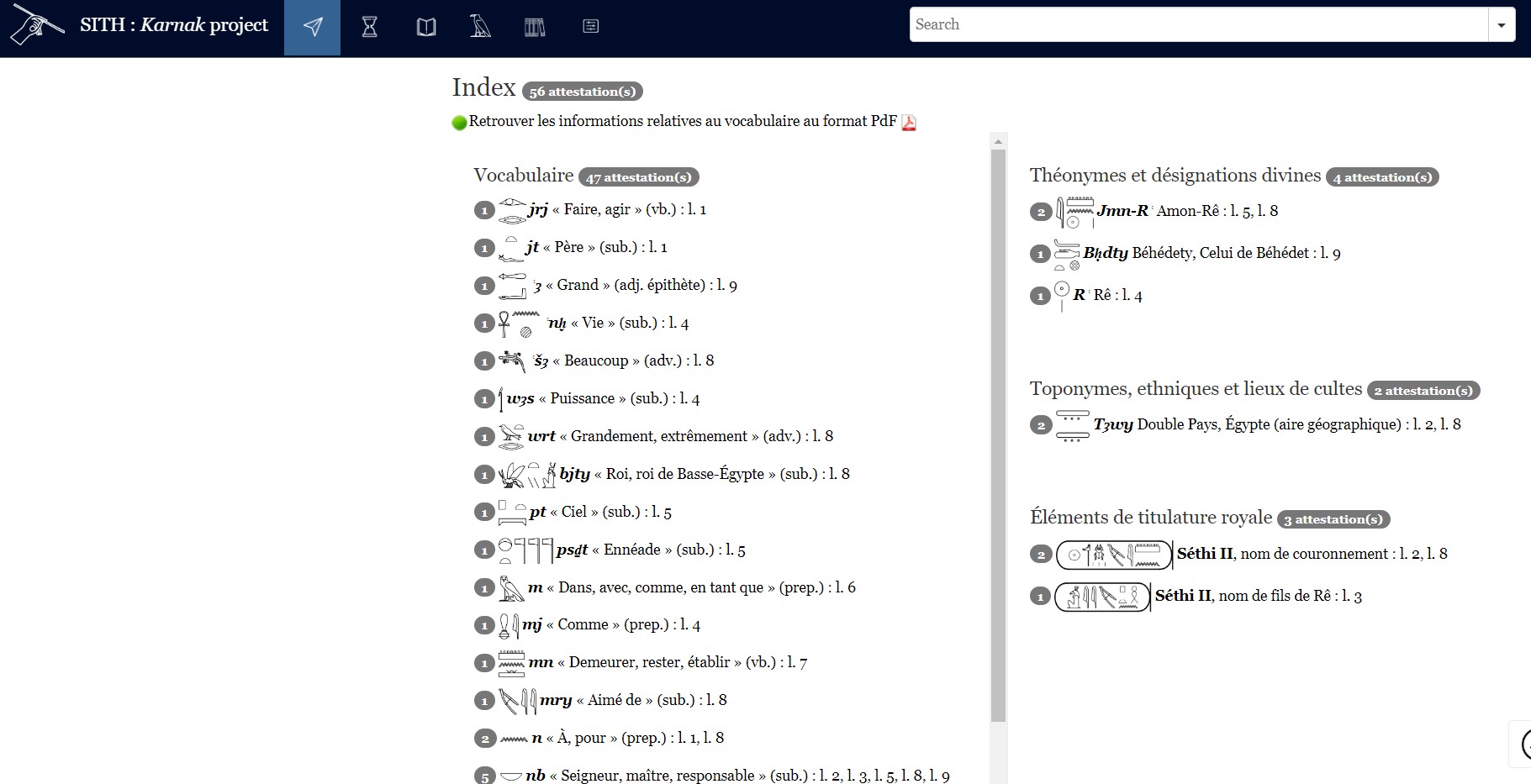
Now there is a word index, sorted alphabetically and the special vocabulary such as names is separated. The frequency of each word is also shown. The entries themselves are clickable and lead to the detailed page of the word.
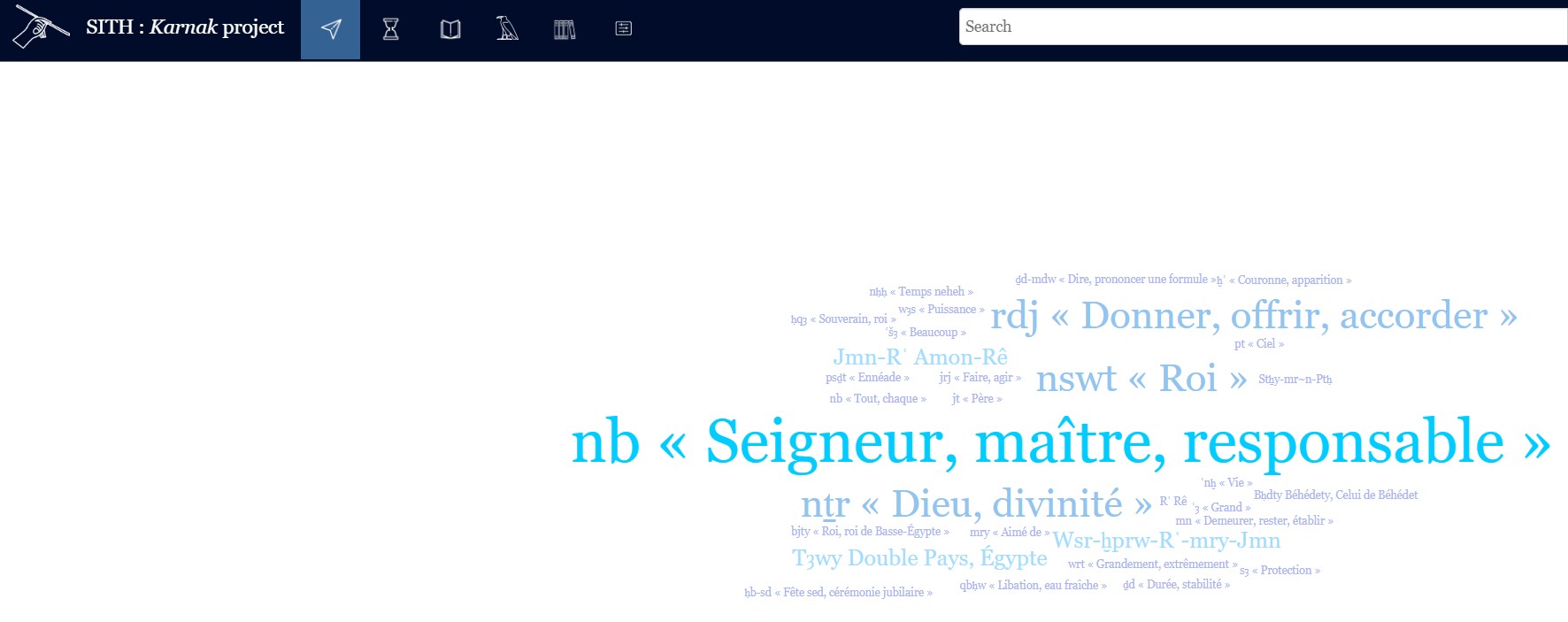
A word cloud is followed by many charts created with CanvasJS.
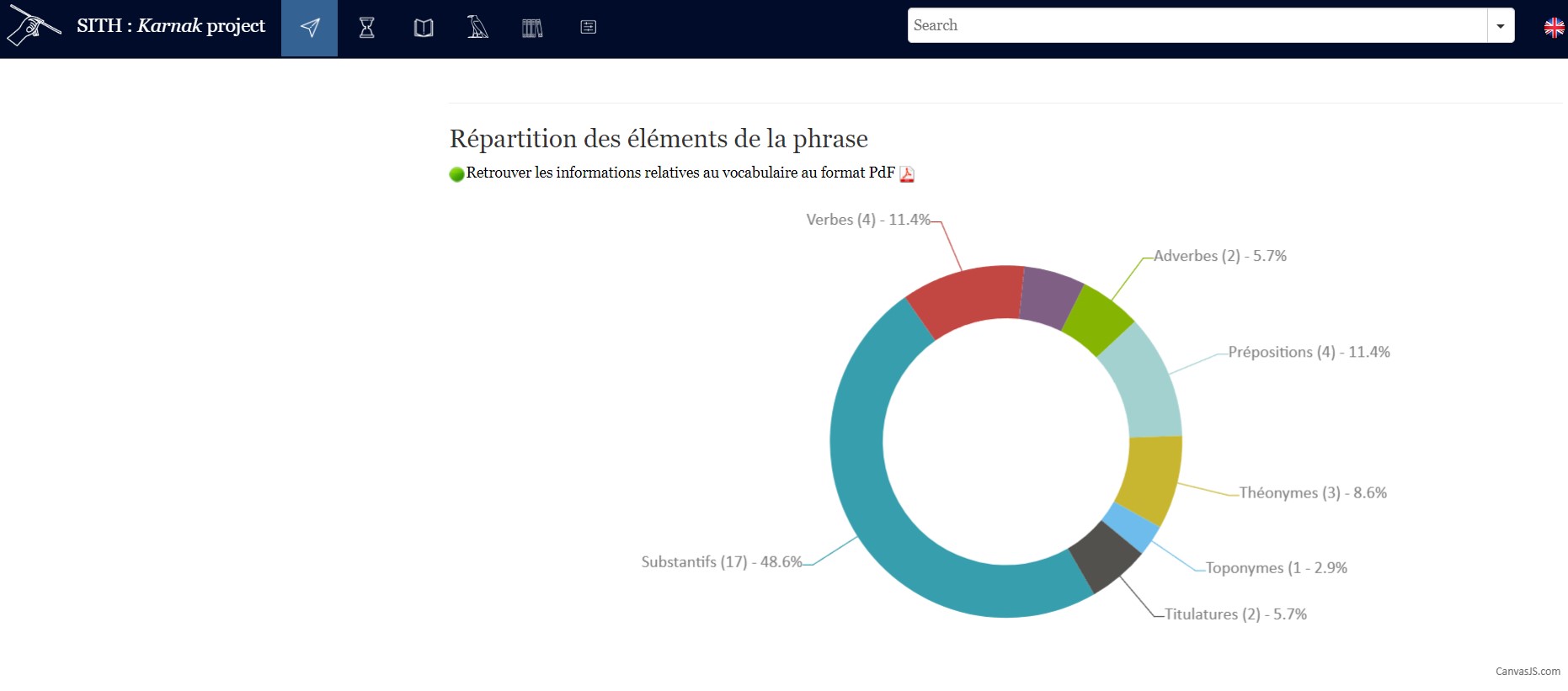
This is an incredibly successful project if you want to browse through the inscriptions of the Karnak Temple, isn’t it? We certainly enjoyed doing so and looked to see if there were any overlaps with our corpus. And lo and behold! We found a total of 31 of our texts in the Karnak project. Here is an overview:
| ORAEC | SITH Karnak |
|---|---|
| oraec70 | http://sith.huma-num.fr/karnak/3450 |
| oraec81 | http://sith.huma-num.fr/karnak/1002 |
| oraec85 | http://sith.huma-num.fr/karnak/1012 |
| oraec92 | http://sith.huma-num.fr/karnak/1013 |
| oraec214 | http://sith.huma-num.fr/karnak/5610 |
| oraec287 | http://sith.huma-num.fr/karnak/1002 |
| oraec394 | http://sith.huma-num.fr/karnak/1012 |
| oraec496 | http://sith.huma-num.fr/karnak/1006 |
| oraec523 | http://sith.huma-num.fr/karnak/3450 |
| oraec564 | http://sith.huma-num.fr/karnak/5990 |
| oraec588 | http://sith.huma-num.fr/karnak/1013 |
| oraec712 | http://sith.huma-num.fr/karnak/1014 |
| oraec925 | http://sith.huma-num.fr/karnak/1005 |
| oraec1048 | http://sith.huma-num.fr/karnak/1024 |
| oraec1050 | http://sith.huma-num.fr/karnak/1012 |
| oraec1068 | http://sith.huma-num.fr/karnak/3450 |
| oraec1120 | http://sith.huma-num.fr/karnak/1019 |
| oraec1476 | http://sith.huma-num.fr/karnak/1017 |
| oraec1667 | http://sith.huma-num.fr/karnak/1011 |
| oraec1982 | http://sith.huma-num.fr/karnak/1018 |
| oraec2229 | http://sith.huma-num.fr/karnak/1007 |
| oraec2559 | http://sith.huma-num.fr/karnak/1023 |
| oraec2623 | http://sith.huma-num.fr/karnak/3450 |
| oraec2639 | http://sith.huma-num.fr/karnak/1016 |
| oraec2648 | http://sith.huma-num.fr/karnak/1020 |
| oraec3033 | http://sith.huma-num.fr/karnak/1013 |
| oraec3307 | http://sith.huma-num.fr/karnak/1021 |
| oraec5354 | http://sith.huma-num.fr/karnak/1009 |
| oraec8036 | http://sith.huma-num.fr/karnak/1008 |
| oraec8038 | http://sith.huma-num.fr/karnak/1010 |
| oraec12793 | http://sith.huma-num.fr/karnak/5990 |
Our texts now also have links to the Karnak project on their metadata page! But now to the words! As with the inscriptions, the project has found an excellent way to browse the material. You can click through the alphabetically arranged vocabulary. The vocabulary itself has four special vocabularies, all of which contain names: Names for gods, names for kings, names for people, and names for places. Let’s look at an example again:
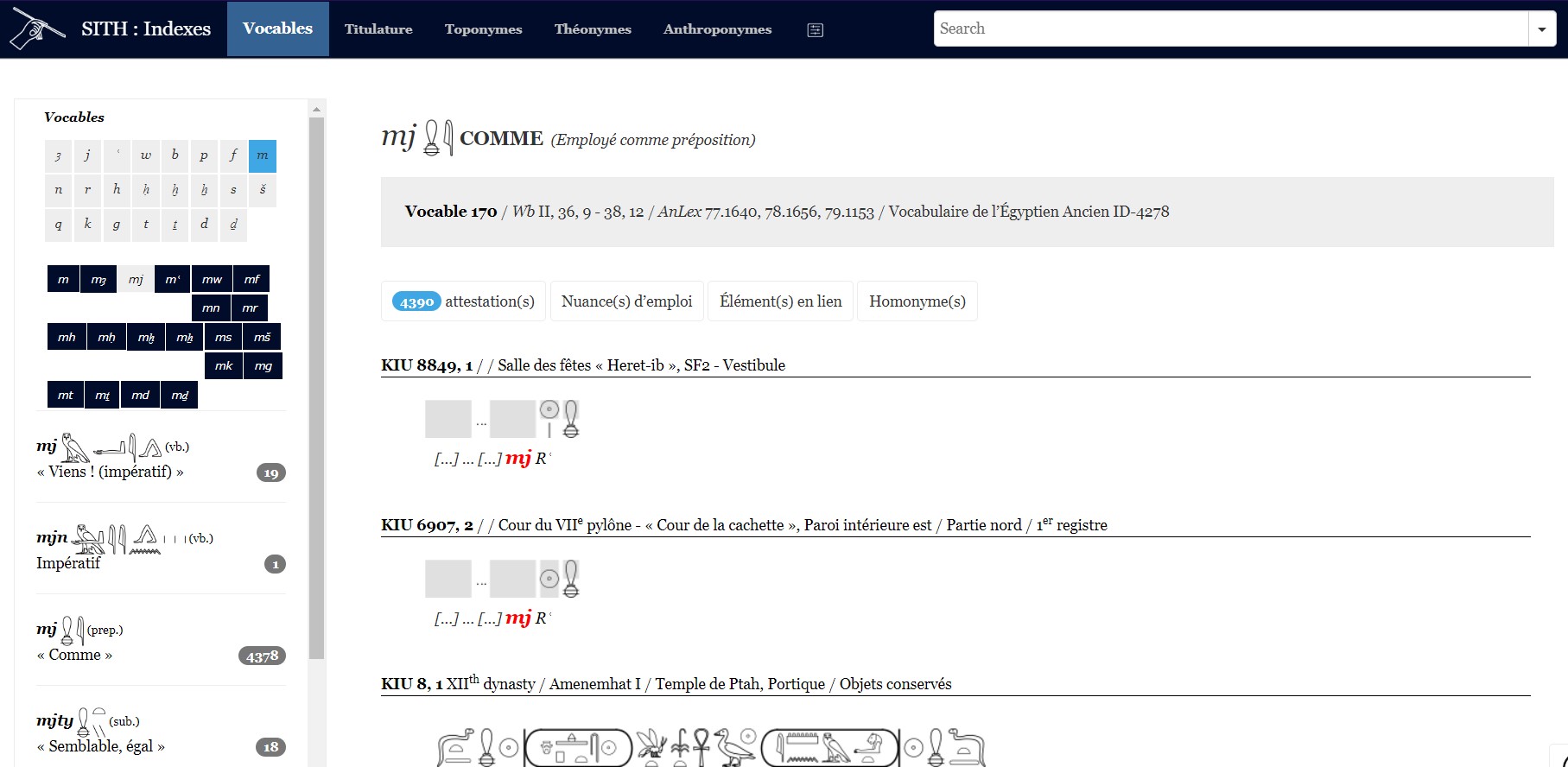
On the left is a navigation tool that allows you to browse through the alphabetically sorted words. The heading shows the transliteration of the word, a hieroglyphic image, the French translation and the word type. The gray block contains the ID of the word. In some cases there is a reference to the Wörterbuch, Meeks, Année lexicographique or VÉgA.
The next line is a real treat. There are four items in this example. First, the number of occurrences is shown. If you click on the field, you can filter the occurrences according to a specific pharaoh.
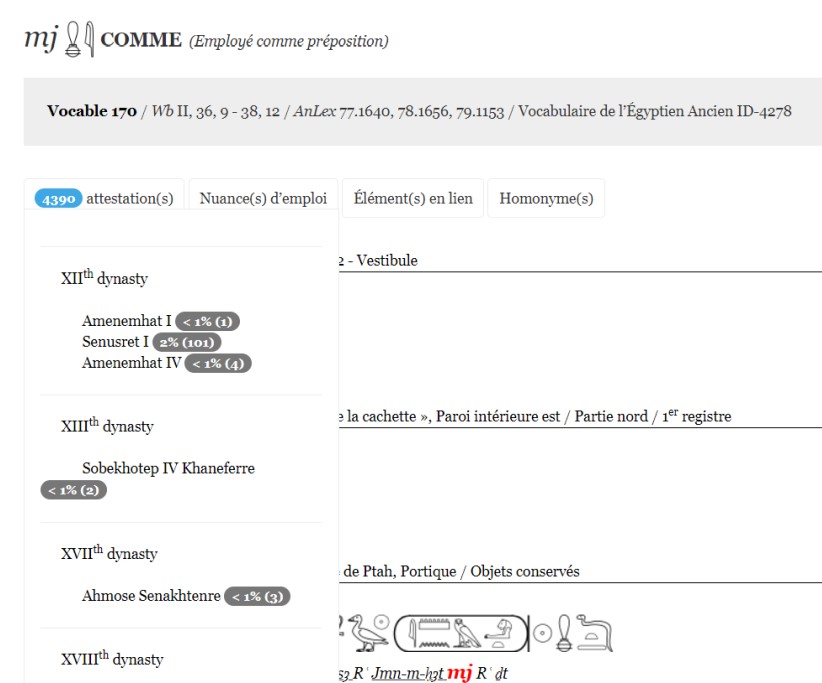
It even shows how many occurrences there are for that word at a given time. The number is also shown in relation to the total number.
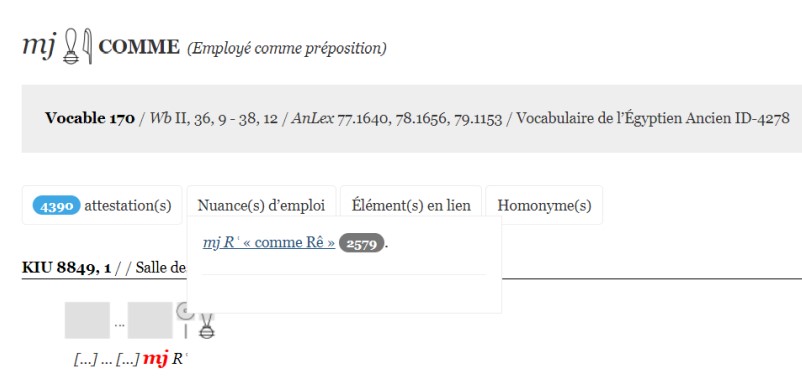
The second item offers relevant collocations of the word, in this case mj Rꜥw. If you click on the collocation, you will see the occurrences. The preposition mj is, of course, part of many names. These are accessible via the third element “Élément(s) en lien”. Finally, the fourth element lists the homonyms.
This is followed by a chronological list of references. Each reference is organized in the same way. It starts with the ID of the inscription. This is followed by the line, separated by a comma. This is followed by the name of the text in question. This is followed by the line containing the word, in hieroglyphics and in transliteration. As with the web pages displaying the inscriptions, the hieroglyphs are reproduced exclusively as image files, and the elements of the transliteration are clickable.
As with the texts, there are a number of overlaps with the words we use in ORAEC. We have created a table with nearly 2000 entries that maps the IDs of our words to those of the Karnak project. This includes, for example, the equivalent for the place Ꜣḫ-bj.t, which has ID 211 in ORAEC and can be found in the Karnak project at http://sith.huma-num.fr/toponyme/66. We have listed all of these equivalents on our word detail pages. To use the example again: Our page with the word Ꜣḫ-bj.t now has a link to the word’s detail page in the Karnak project. We hope that you will benefit from our efforts and be able to immerse yourself in the great pages of the Karnak Project.
This work is marked with CC0 1.0 Universal